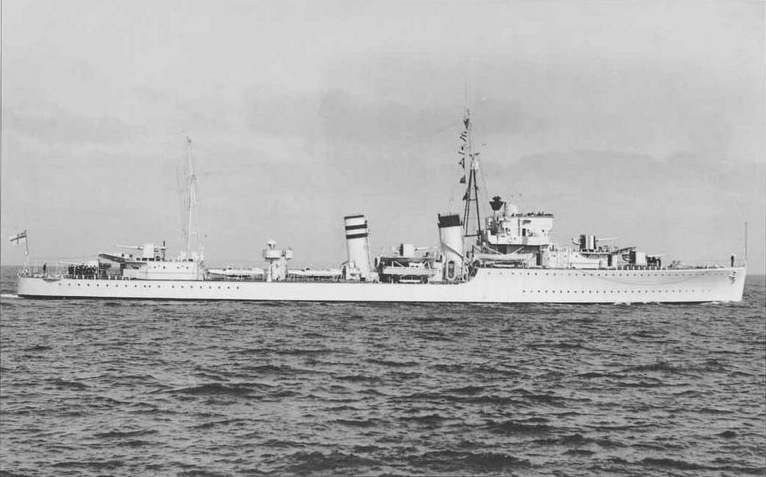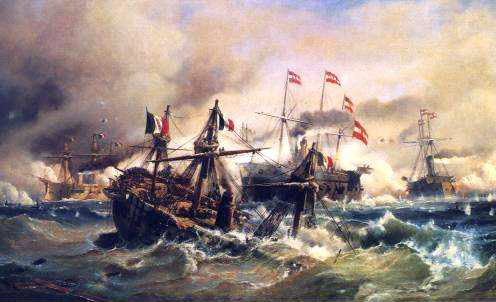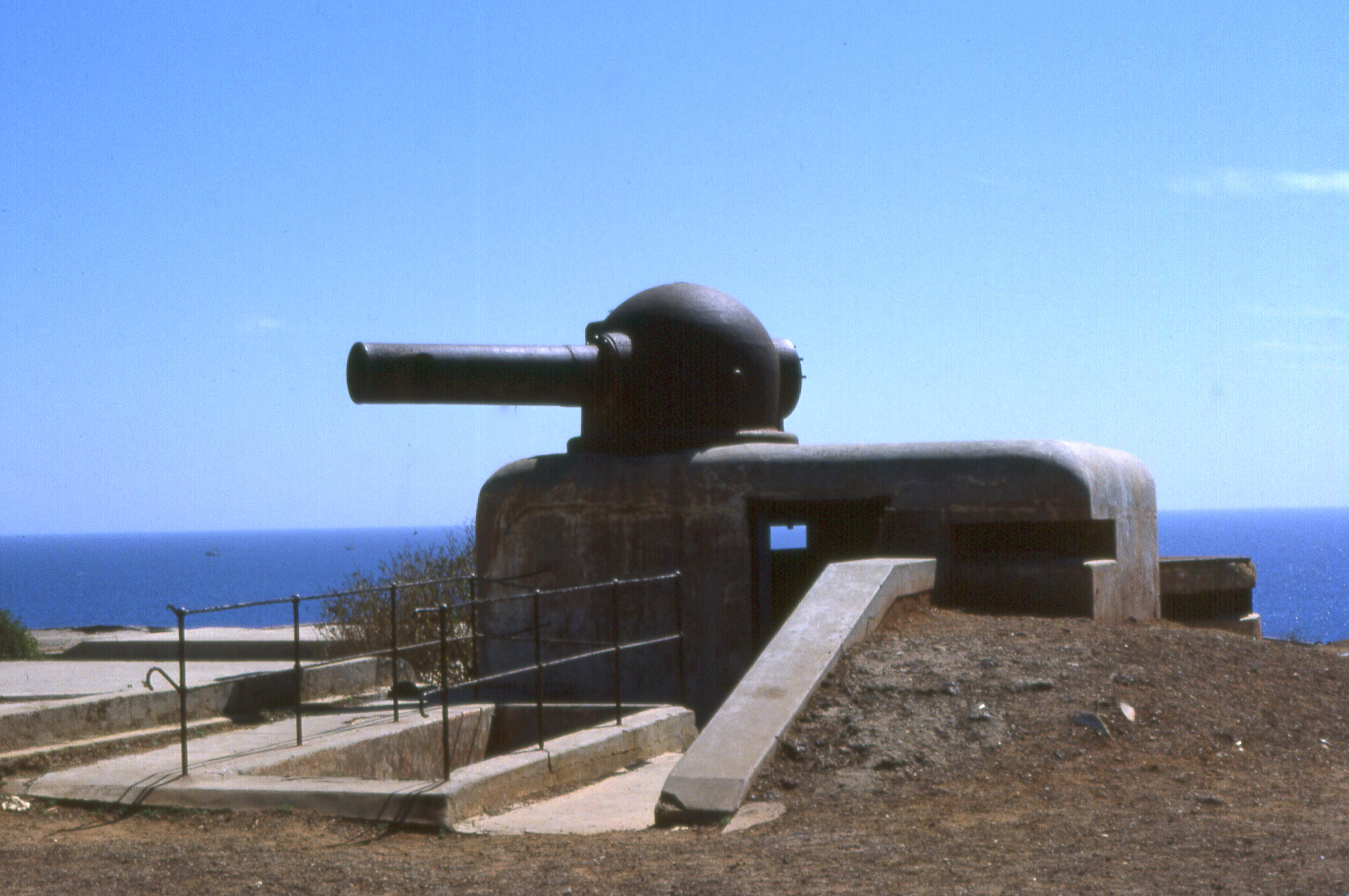|
G And H-class Destroyer
The G- and H-class destroyers were a group of 18 destroyers built for the Royal Navy during the 1930s. Six additional ships being built for the Brazilian Navy when World War II began in 1939 were purchased by the British and named the ''Havant'' class. The design was a major export success with other ships built for the Argentine Navy, Argentine and Royal Hellenic Navy, Royal Hellenic Navies. They were assigned to the Mediterranean Fleet upon completion and enforced the Non-intervention in the Spanish Civil War, Non-Intervention Agreement during the Spanish Civil War of 1936–1939. Most ships were recalled home or were sent to the North Atlantic from October to November 1939, after it became clear that Kingdom of Italy#Fascist regime (1922–1943), Fascist Italy was not going to intervene in World War II. Then they began to escort convoys and patrol for German submarines and commerce raiders. Two ships were lost to German naval mine, mines in the first six months of the war. ... [...More Info...] [...Related Items...] OR: [Wikipedia] [Google] [Baidu] |
HMS Hasty (H24)
HMS ''Hasty'' was an H-class destroyer built for the Royal Navy during the mid-1930s. She was assigned to the Mediterranean Fleet until the beginning of World War II. The ship transferred to Freetown, Sierra Leone, in October 1939 to hunt for German commerce raiders in the South Atlantic with Force K. ''Hasty'' returned to the British Isles in early 1940 and covered the evacuation of Allied troops from Namsos in early May 1940 during the Norwegian Campaign. She was transferred back to the Mediterranean Fleet shortly afterwards and participated in the Battle of Calabria and the Battle of Cape Spada in July 1940. The ship took part in the Battle of Cape Matapan in March and evacuated British and Australian troops from both Greece and Crete in April and May. In June, ''Hasty'' participated in the Syria-Lebanon Campaign and was escorting convoys and the larger ships of the Mediterranean Fleet for the next year. During the Second Battle of Sirte in March 1942 she defended a co ... [...More Info...] [...Related Items...] OR: [Wikipedia] [Google] [Baidu] |
Spanish Civil War
The Spanish Civil War () was a military conflict fought from 1936 to 1939 between the Republican faction (Spanish Civil War), Republicans and the Nationalist faction (Spanish Civil War), Nationalists. Republicans were loyal to the Left-wing politics, left-leaning Popular Front (Spain), Popular Front government of the Second Spanish Republic. The opposing Nationalists were an alliance of Falangism, Falangists, monarchists, conservatives, and Traditionalism (Spain), traditionalists led by a National Defense Junta, military junta among whom General Francisco Franco quickly achieved a preponderant role. Due to the international Interwar period#Great Depression, political climate at the time, the war was variously viewed as class struggle, a War of religion, religious struggle, or a struggle between dictatorship and Republicanism, republican democracy, between revolution and counterrevolution, or between fascism and communism. The Nationalists won the war, which ended in early 1939, ... [...More Info...] [...Related Items...] OR: [Wikipedia] [Google] [Baidu] |
Royal Italian Navy
The , ) (RM) or Royal Italian Navy was the navy of the Kingdom of Italy () from 1861 to 1946. In 1946, with the birth of the Italian Republic (''Repubblica Italiana''), the changed its name to ''Marina Militare'' ("Military Navy"). Origins The was established on 17 March 1861 following the proclamation of the formation of the Kingdom of Italy. Just as the Kingdom was a unification of various states in the Italian peninsula, so the was formed from the navies of those states, though the main constituents were the navies of the former kingdoms of Sardinia and Naples. The new Navy inherited a substantial number of ships, both sail- and steam-powered, and the long naval traditions of its constituents, especially those of Sardinia and Naples, but also suffered from some major handicaps. Firstly, it suffered from a lack of uniformity and cohesion; the was a heterogeneous mix of equipment, standards and practice, and even saw hostility between the officers from the various for ... [...More Info...] [...Related Items...] OR: [Wikipedia] [Google] [Baidu] |
Sister Ship
A sister ship is a ship of the same Ship class, class or of virtually identical design to another ship. Such vessels share a nearly identical hull and superstructure layout, similar size, and roughly comparable features and equipment. They often share a common naming theme, either being named after the same type of thing or person (places, constellations, heads of state) or with some kind of alliteration. Typically the ship class is named for the first ship of that class. Often, sisters become more differentiated during their service as their equipment (in the case of naval vessels, their armament) are separately altered. For instance, the U.S. warships , , , and are all sister ships, each being an . Perhaps the most famous sister ships were the White Star Line's s trio, consisting of , and . As with some other liners, the sisters worked as running mates. Of the three sister ships, ''Titanic'' and ''Britannic'' would both sink within a year of being launched, while RMS ''O ... [...More Info...] [...Related Items...] OR: [Wikipedia] [Google] [Baidu] |
Battle Of Dakar
The Battle of Dakar, also known as Operation Menace, was an unsuccessful attempt in September 1940 by the Allies of World War II, Allies to capture the strategic port of Dakar in French West Africa (modern-day Senegal). It was hoped that the success of the operation could overthrow the pro-German Vichy France, Vichy French administration in the colony, and be replaced by a pro-Allied Free French Forces, Free French one under General Charles de Gaulle. Background At the beginning of World War II, the French fleet in the Mediterranean was to have countered the Regia Marina, Italian Navy, thereby leaving the British Royal Navy free to concentrate on the German warships in the North Sea and Atlantic. After the Battle of France, defeat of France and the conclusion of the Second Armistice at Compiègne, armistice between France and Nazi Germany in June 1940, there was considerable confusion as to the allegiance of the various French colonies. Some, like Cameroon and French Equatorial A ... [...More Info...] [...Related Items...] OR: [Wikipedia] [Google] [Baidu] |
Force H
Force H was a British naval formation during the Second World War. It was formed in late-June 1940, to replace French naval power in the western Mediterranean removed by the French armistice with Nazi Germany. The force occupied an odd place within the naval chain of command. Normal British practice was to have naval stations and fleets around the world, whose commanders reported to the First Sea Lord via a flag officer. Force H was based at Gibraltar but there was already a flag officer at the base, Flag Officer Commanding, North Atlantic. The commanding officer of Force H did not report to this Flag Officer but directly to the First Sea Lord, Admiral of the Fleet Sir Dudley Pound. Hunt for the ''Admiral Graf Spee'' In anticipation of the outbreak of World War 2 on 3 September 1939 the German Kriegsmarine had already deployed the two heavy cruisers and as commerce raiders in the North and South Atlantic. When these ships started operating against British and French sh ... [...More Info...] [...Related Items...] OR: [Wikipedia] [Google] [Baidu] |
Evacuation Of Dunkirk
The Dunkirk evacuation, codenamed Operation Dynamo and also known as the Miracle of Dunkirk, or just Dunkirk, was the evacuation of more than 338,000 Allied soldiers during the Second World War from the beaches and harbour of Dunkirk, in the north of France, between 26 May and 4 June 1940. The operation commenced after large numbers of Belgian, British, and French troops were cut off and surrounded by German troops during the six-week Battle of France. After Germany invaded Poland in September 1939, France and the British Empire declared war on Germany and imposed an economic blockade. The British Expeditionary Force (BEF) was sent to help defend France. After the Phoney War of October 1939 to April 1940, Germany invaded Belgium, the Netherlands, and France on 10 May 1940. Three panzer corps attacked through the Ardennes and drove northwest to the English Channel. By 21 May, German forces had trapped the BEF, the remains of the Belgian forces, and three French field armi ... [...More Info...] [...Related Items...] OR: [Wikipedia] [Google] [Baidu] |
Battle Of France
The Battle of France (; 10 May – 25 June 1940), also known as the Western Campaign (), the French Campaign (, ) and the Fall of France, during the Second World War was the Nazi Germany, German invasion of the Low Countries (Belgium, Luxembourg and the Netherlands) and French Third Republic, France. The plan for the invasion of the Low Countries and France was called (Case Yellow or the Manstein plan). (Case Red) was planned to finish off the French and British after the Dunkirk evacuation, evacuation at Dunkirk. The Low Countries and France were defeated and occupied by Axis troops down to the Demarcation line (France), Demarcation line. On 3 September 1939, French declaration of war on Germany (1939), France and United Kingdom declaration of war on Germany (1939), Britain declared war on Nazi Germany, over the German invasion of Poland on 1 September. In early September 1939, the French army began the limited Saar Offensive but by mid-October had withdrawn to the start line ... [...More Info...] [...Related Items...] OR: [Wikipedia] [Google] [Baidu] |
First Battle Of Narvik
The Battles of Narvik were fought from 9 April to 8 June 1940, as a naval battle in Ofotfjord and as a land battle in the mountains surrounding the north Norwegian town of Narvik, as part of the Norwegian Campaign of the Second World War. The two naval battles in Ofotfjord on 10 April and 13 April were fought between the British Royal Navy and the German ''Kriegsmarine'', while the two-month land campaign was fought by Norwegian, French, British, and Polish troops against German mountain troops, shipwrecked ''Kriegsmarine'' sailors, and German paratroopers (''Fallschirmjäger'') from the 7th Air Division. Although defeated at sea off Narvik, losing control of the town of Narvik and being pushed back towards the Swedish border, the Germans eventually prevailed because of the Allied evacuation from Norway in June 1940 following the Battle of France. Narvik provided an ice-free harbour in the North Atlantic for iron ore transported by rail from Kiruna in Sweden. Both sides i ... [...More Info...] [...Related Items...] OR: [Wikipedia] [Google] [Baidu] |
Naval Mine
A naval mine is a self-contained explosive weapon placed in water to damage or destroy surface ships or submarines. Similar to anti-personnel mine, anti-personnel and other land mines, and unlike purpose launched naval depth charges, they are deposited and left to wait until, depending on their fuzing, they are triggered by the approach of or contact with any vessel. Naval mines can be used offensively, to hamper enemy shipping movements or lock vessels into a harbour; or defensively, to create "safe" zones protecting friendly sea lanes, harbours, and naval assets. Mines allow the minelaying force commander to concentrate warships or defensive assets in mine-free areas giving the adversary three choices: undertake a resource-intensive and time-consuming minesweeping effort, accept the casualties of challenging the minefield, or use the unmined waters where the greatest concentration of enemy firepower will be encountered. Although international law requires signatory nations ... [...More Info...] [...Related Items...] OR: [Wikipedia] [Google] [Baidu] |
Commerce Raider
Commerce raiding is a form of naval warfare used to destroy or disrupt logistics of the enemy on the open sea by attacking its merchant shipping, rather than engaging its combatants or enforcing a blockade against them. Privateering is a form of commerce raiding conducted by independent operators. Privateering The first sort of commerce raiding was for nations to commission privateers. Early instances of this type of warfare were by the English and Dutch against the Spanish treasure fleets of the 16th century, which resulted in financial gain for both captain and crew upon capture of enemy vessels (" prizes"). 17th and 18th centuries Privateers formed a large part of the total military force at sea during the 17th and 18th centuries. In the First Anglo-Dutch War, English privateers attacked the trade on which the United Provinces entirely depended, capturing over 1,000 Dutch merchant ships. During the subsequent war with Spain, Spanish and Flemish privateers in the serv ... [...More Info...] [...Related Items...] OR: [Wikipedia] [Google] [Baidu] |







